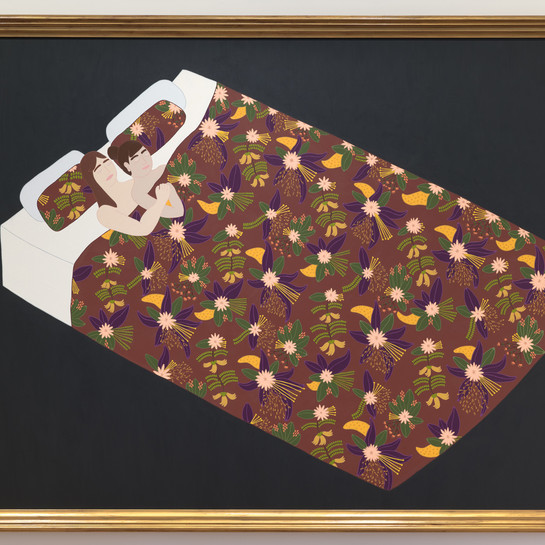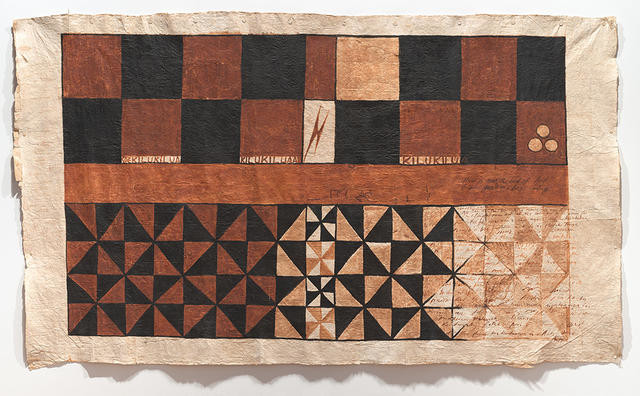Kulimoe'anga Stone Maka
Tonga, b.1970
Tongan,
Pasifika
Koekilukilua
- 2007
- Oil, clay and dye on tapa cloth
- Purchased 2021
- 2110 x 3680mm
- 2021/178
Tags: abstraction, checker pattern, squares (geometric figures), triangles (polygons)
Ngatu is the Tongan name for tapa cloth made from the inner bark of hiapo (the paper mulberry tree). Making ngatu takes time and hard work, from growing and looking after the plants to stripping the bark and beating it to form large pieces of cloth which are then decorated with natural dyes and pigments, often by groups of women. Ngatu tāʻuli (blackened tapa cloth) uses a black dye made from the smoke of tuitui (candlenuts) and is sacred. Usually reserved for Tongan royalty and aristocracy, it is used to display power and respect.
Ōtautahi Christchurch-based artist Kulimoeʻanga Stone Maka draws on this tradition within his work, innovating the forms to consider contemporary ideas with evolving designs, symbols and narratives. In pre-colonial times, ngatu was patterned mainly with geometric designs. After Europeans arrived in the nineteenth-century, artists began to use text and symbols, such as the coat of arms, Norfolk pine tree, eagle, dove and lion. Maka builds on this history, adapting aspects to tell his own stories of global relationships, migration and life.
Maka was thinking of the relationship between Europe and Tonga, and the connections between two forms of abstraction when he made this work. It is possible that early modernist artists in Europe could have seen examples of Pacific art and tapa. Were Rothko, Picasso and Mondrian inspired by Maka’s ancestors, rather than the other way around?

